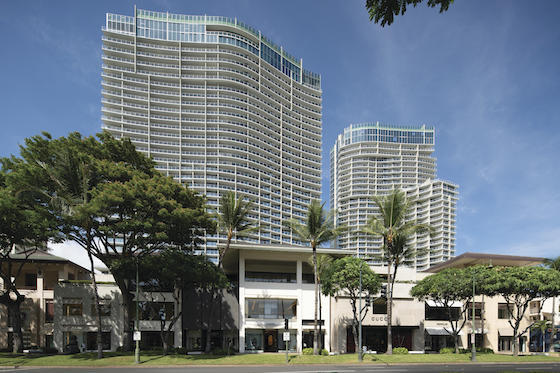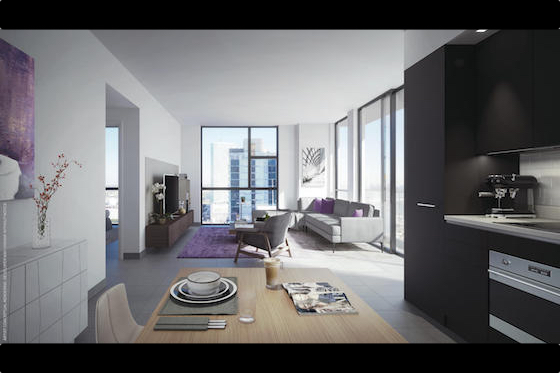The future of branded residential looks bright. In September 2018, Marriott International declared plans to expand its branded residential portfolio by over 70% by 2022. Four Seasons Hotels & Resorts, which has had residences since 1985, is embarking on standalone projects, and even midmarket Yotel got into the game, announcing YotelPad in January 2018; properties are set for Switzerland, Dubai, Park City, Utah, and Miami, targeting smaller, more affordable spaces toward a younger audience.
“We’re extremely pleased with the growth we’re seeing,” says Tim Grisius, global real estate officer at Marriott, which sees international and luxury markets as the biggest residential opportunities.
“Before we bought Starwood, we were very heavily concentrated with Ritz-Carlton. It was probably 95% of our portfolio, and after the Starwood acquisition, we stepped back and said, ‘What really should be our approach going forward?’” The strategy involves going from 17 countries to 40 by 2026 with Ritz-Carlton and possibly St. Regis and Luxury Collection brands driving residential growth.
Grisius says Marriott trends toward mixed-use projects but has utilized standalone properties on a case-by-case basis.

Four Seasons has a pipeline of more than 50 hotels and resorts in active development, 80% of which have a residential component, says Paul White, president of residential at the Toronto-based company, which manages its 41 residential properties (topping 3,800 units) in 19 countries. Opening in 2019 are hotels with private residences in Bangkok, Bengaluru, Los Cabos, Madrid, Montreal, and in the U.S. in Napa Valley and Boston. The company expects its residential portfolio to double in the next five to seven years.
Residential is a key part of the company’s amped-up development goals, particularly in the U.S., White says. “We want to use it very selectively in the world’s highest-profile markets, where the market demand characteristics for real estate prove out the highest prices and the best opportunity for people to live the brand in an elevated way,” he says.

Jonathan Genton’s Pasadena, California-based Genton Property Group is developing Four Seasons’ first standalone residential project in North America, in Los Angeles, adjacent to the Four Seasons Los Angeles at Beverly Hills (other Four Seasons standalone projects include London’s Twenty Grosvenor Square, opening this year; on tap are Marrakech and San Francisco).
The 12-story building, with 59 units – including a 12,000-square-foot penthouse whose asking price is rumored to be US$50 million, according to the Robb Report – is set for completion this fall. With most of the units selling for US$4 million to US$18 million, it’s playing to Genton’s bet that “L.A. as a global market was coming into its own.”
Four Seasons is catering to global buyers who buy based on the plan and not a walk-through of a finished residence, with attention to detail, material and technology.
This is Genton’s first foray into branded residential. What’s different about it? “Everything. Just everything,” he says. “While it’s a building, it’s in a built environment. What Four Seasons brings to it is how that environment is activated and serviced and curated. It’s really a curation.”
And at least right now, for developers of luxury branded residential, the sales are there. Real estate firm Irongate, which specializes in luxury branded residential, developed The Ritz-Carlton Residences, Waikiki Beach project in 2013 and sold over 85% of the residences through a private sales event that same year. A second tower was announced in 2014 and sold out.
According to Irongate’s president, Jason Grosfeld, the choice to go with Ritz-Carlton was a no-brainer, as the brand is strong in Asia and a large portion of Irongate’s clientele in Hawaii is Asia-based. The Ritz-Carlton Residences, Waikiki Beach units range in price from a little under US$1 million to US$20 million.
What happens when faced with a slowdown?
“We try to find unique locations in markets that have great characteristics, like barriers to entry or good margins, or they are experiencing and we believe they will continue to experience, growth for a while,” says Grosfeld.
“Marriott (for instance) doesn’t want to be the financial sponsor of those projects for exactly that reason,” says Sean Hennessey, CEO of hotel consultancy Lodging Advisors. “None of the hotel companies would want, essentially, the wrath of Wall Street were they to suddenly hold a lot of real estate in a down market.”
It’s also a matter of timing, Hennessey stresses. If the developer builds a branded residential project and sells them before a down market hits, it becomes a problem for the individual owners. If a downturn hits before the developer sells the units, it may be possible to rent the units on a short-term basis until the market swings back.“
The reality is it’s very difficult to rent those units as hotel rooms in a downturn because the level of fixtures, the amount of cleaning, the time to service them is much greater and the margins become that much thinner,” Hennessey says.
